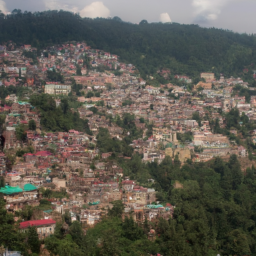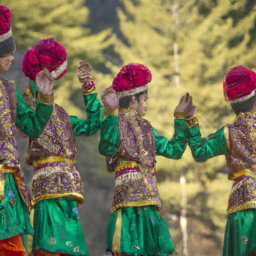 Nestled in the lap of the Himalayas, Himachal Pradesh is a treasure trove of natural beauty, adventure, and tranquility. The state is renowned for its picturesque hill stations, each offering a unique blend of scenic landscapes, cultural richness, and recreational activities. From the bustling markets of Shimla to the serene meadows of Kufri, these hill stations are perfect getaways for those seeking respite from the chaos of city life.
Nestled in the lap of the Himalayas, Himachal Pradesh is a treasure trove of natural beauty, adventure, and tranquility. The state is renowned for its picturesque hill stations, each offering a unique blend of scenic landscapes, cultural richness, and recreational activities. From the bustling markets of Shimla to the serene meadows of Kufri, these hill stations are perfect getaways for those seeking respite from the chaos of city life.
One of the most popular hill stations in Himachal Pradesh is Shimla, the summer capital of British India. This charming town is famous for its colonial architecture, vibrant bazaars, and stunning views of the surrounding mountains. Visitors can stroll along the Mall Road, where they can shop for local handicrafts and enjoy delicious street food. The Ridge, a large open space in the heart of Shimla, offers breathtaking views and is often the site of cultural events and festivals.
Kufri, located just a short drive from Shimla, is another enchanting destination that attracts tourists year-round. Known for its lush green landscapes and adventure sports, Kufri is a haven for nature lovers and thrill-seekers alike. In winter, the area transforms into a snowy wonderland, perfect for skiing and snowboarding. During the summer months, visitors can enjoy horse riding and trekking through the scenic trails that wind through the hills.
For those looking to explore the rich flora and fauna of the region, Kufri is home to the Himalayan Nature Park, which showcases a variety of plant and animal species native to the area. The park is an excellent spot for families and nature enthusiasts to learn more about the local ecosystem and enjoy a day out in the fresh mountain air.
Another gem in Himachal Pradesh is Manali, a hill station that has become synonymous with adventure tourism. With its stunning landscapes, Manali offers a plethora of activities such as paragliding, river rafting, and trekking. The Solang Valley, located nearby, is particularly famous for its adventure sports and breathtaking views. Visitors can also explore the ancient Hadimba Temple, which is surrounded by cedar forests and offers a glimpse into the region’s rich cultural heritage.
As you venture further into the state, you will find the quaint town of Dharamshala, which is known for its Tibetan culture and serene environment. Home to the Dalai Lama, this hill station is a spiritual retreat for many. The town is dotted with monasteries, meditation centers, and vibrant markets selling Tibetan handicrafts. The nearby McLeod Ganj is a popular spot for tourists, offering stunning views of the Dhauladhar mountain range and a chance to experience the local Tibetan cuisine.
For those who prefer a quieter escape, the lesser-known hill stations like Chail and Narkanda offer a peaceful retreat away from the crowds. Chail, famous for its highest cricket ground in the world, is surrounded by lush forests and offers stunning views of the valleys below. Narkanda, on the other hand, is known for its apple orchards and is a great place for skiing in the winter months.
While exploring these enchanting hill stations, it’s essential to consider sustainable travel practices. By minimizing your environmental impact, you can help preserve the natural beauty of Himachal Pradesh for future generations. To get started on your eco-adventure journey, learn more about how you can minimize your environmental impact during travel.
When planning your trip, consider booking accommodations through local businesses to support the community. Websites like websiteservice4all can help you find the best options that align with your travel preferences. Staying in locally-owned guesthouses or homestays not only enhances your experience but also allows you to connect with the culture and traditions of the region.
As you traverse the winding roads of Himachal Pradesh, you will encounter breathtaking views at every turn. The lush green valleys, snow-capped peaks, and vibrant wildflowers create a picturesque backdrop that is perfect for photography enthusiasts. Whether you are an adventure seeker or someone looking to unwind, the hill stations of Himachal Pradesh offer something for everyone.
For more info, visit termite-pestcontrol-longbeach.com. This site provides valuable insights into maintaining a pest-free environment, which is essential for enjoying your stay in the beautiful hill stations of Himachal Pradesh.
the enchanting hill stations of Himachal Pradesh are a must-visit for anyone seeking adventure, relaxation, or a deeper connection with nature. From the bustling streets of Shimla to the serene landscapes of Kufri, each destination offers a unique experience that will leave you with lasting memories. So pack your bags, hit the road, and immerse yourself in the beauty of this Himalayan paradise.






